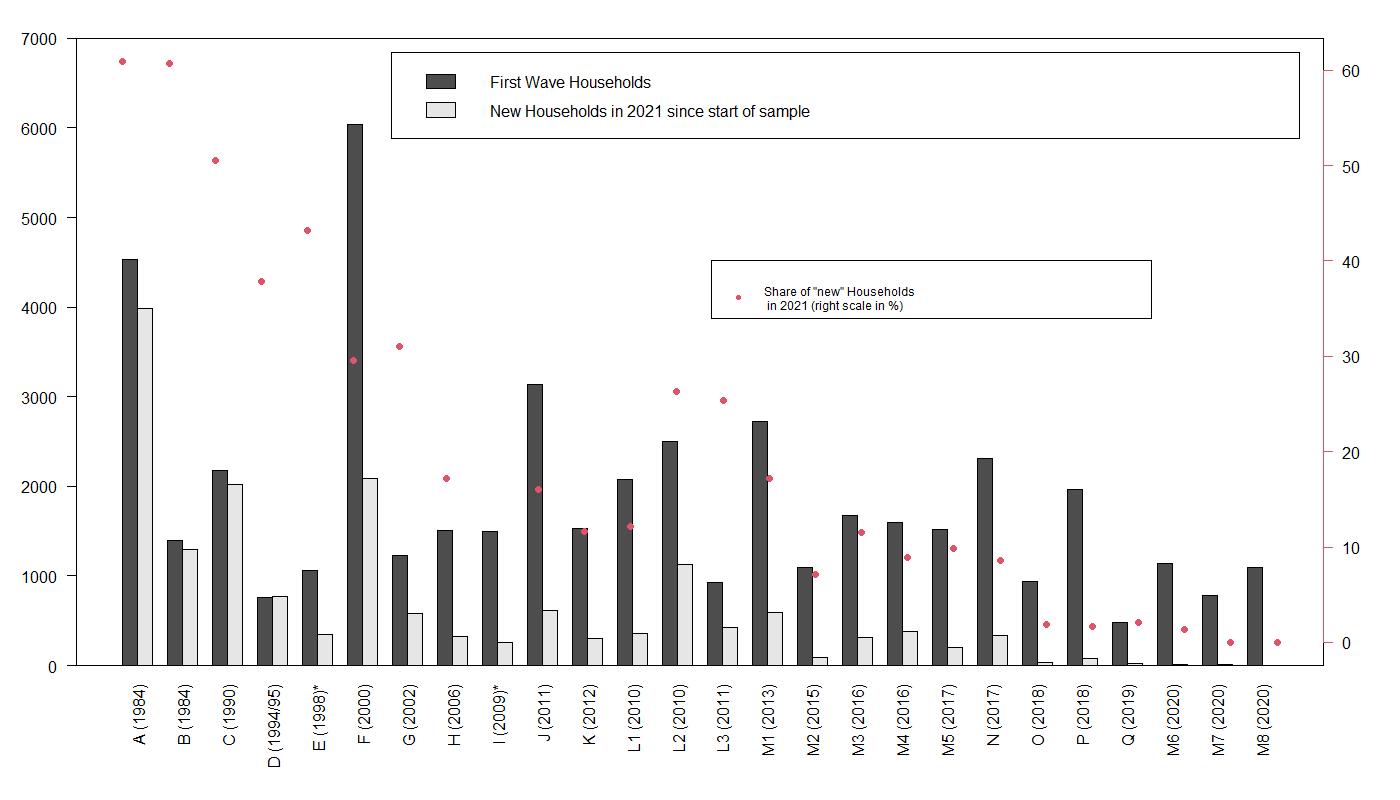Eligibility and Follow-up¶
As mentioned, the SOEP’s goal is to be representative of the residential population of Germany. All household members 16 and older are eligible for a personal interview, starting with the youth questionnaire for their age group, followed by “regular” individual questionnaires thereafter. As years go by, the children from the first wave reach age eligibility and become panel members. If they move out and start their own families, they and their new family members are also part of the survey. “New” individuals become part of the SOEP population by being born into SOEP households or as a result of residential mobility. If a person enters a SOEP household after the initial wave in which that household was surveyed, this person is asked to fill out the regular individual questionnaire if age-eligible or will be asked to participate once old enough. In the absence of panel attrition, this would make the SOEP a self-sustaining survey.
The concept of how to follow respondents and sample members over time is important for the representativeness of the study. The basic principle for follow-up in the SOEP is that all persons participating in a wave of any subsample will be surveyed in the following years as long as they stay within the boundaries of Germany. This rule also extends to respondents who entered a SOEP household after the first wave in which it was surveyed due to residential mobility or birth. If there is a “split-off”, that is, if someone moves out of the household in which they were last interviewed, the members of the new household receive a new household identifier. The table conceptualizes how new sample members and households are surveyed in the SOEP. The figure shows that as a result of the follow-up concept, several thousand “new” households had become part of the SOEP population.
Individuals or households that could not be interviewed in a given year are termed “temporary drop-outs”. They are followed until there are two consecutive waves of missing interviews for all household members or until the entire household refuses to participate further. In the case of a temporary drop-out, in which a respondent participates in the survey again after not participating in the previous wave, the respondent is asked to fill out an additional short questionnaire covering key information about employment and demographics in the year of their absence.
Existing Households |
New Households |
|
|---|---|---|
Existing Individuals |
Classic case: without change of address entire household moves |
Respondent moves out of existing household and forms a new household |
New Individuals |
Born into household, move into household |
Moved into or born into HH formed after a respondent moved out of existing HH |
Changes to the Sample: Old and new household in the SOEP

Download R Code to create figure
Last change: Sep 01, 2025